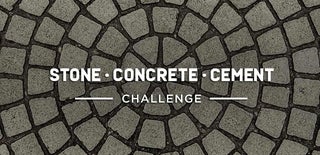Introduction: Concrete Ants Nest
When you keep ants there comes a time when you need to expand your nest. There are a variety of different nests available to buy or you can build a nest choosing from different materials. Acrylic nests are nice for some species but others don’t like the slippery surface. There is Ytong (aerated concrete) which is good if you need to keep a humid nest and gypsum nests which are easy to cast and carve even with hand tools. Some ants like wooden nests (Camponotus) and others will thrive in dig able material or prefer gypsum.
I keep Messor barbarus (among others) which need only a part of the nest humidified; other parts are used as granary. Messor are harvester ants. Once the colony is big enough they get all the humidity in the nest through the seeds they collect.
Concrete doesn’t store humidity very well so it is perfect for dry granaries. You just need to keep one part of the nest humidified.
It’s very important to understand the needs of your colony before you go on and design a nest or arena.
Supplies
Concrete
Some mould, ours is made from plywood.
some material to form the chambers.
Step 1: Design
This nest has three internally interconnected sides with acrylic glass covers. It is hollowed out on the back to save some weight and material. There is a hole on one side for an ½ inch tube to connect to an arena. The tube is cast in for a perfect fit. On the other corner I cast in a metal mash for ventilation. To humidify the nest you either bore a small hole in the glass cover or pour water on the glass. The capillary effect will suck in all the water along the edges of the glass and distribute the water nicely.
Step 2: Failure
I did cast concrete before for a skateboard mould but fine features like chambers and integrated screwed on acrylic glass require a lot more scrutiny to detail. There is no room for error once you pour the concrete.
First I tried salt dough for the chambers but it was too hard to work it into the mould and keep it from falling from the sides. It might work though if you only do a one sided nest. The idea was to have something that you can easily wash out with the garden hose as opposed to other materials you need to dig out with tools.
I then used cardboard for my first try. I stacked some corrugated cardboard to ~20mm height and cut it with the scroll saw.
I drilled and countersunk the acrylic glass and installed the glass completely with screws and dowels into a mould made out of some scrap plywood.
Leave the protective film on the acrylic glass. If you leave the mould untreated you will see the texture of the wood on the concrete. The easiest way to get a nice and smooth surface is to line the mould with packaging tape in advance.
The forms for the chambers go on the acrylic glass with double sided tape. I used too much tape and it was really hard to get the glass out of the concrete again without damaging the nest. Don’t use too much tape, just so much that everything can hold together during casting. It is also a good Idea to use some thicker tape and wax around the edges for easier release after casting.
I learned all that the hard way with my first cast. Luckily the cast itself went bad anyways after I used too dry concrete. I broke quite some edges releasing the acrylic.
Step 3: Success
For my second try I used very fine aggregate in the concrete and did a very liquid cast. For the chambers I used a 20mm xps board this time. To connect the sides I also used small pieces of XPS. I cast in a metal filter mesh for ventilation.
Step 4: Next
My next concrete nest will have an integrated arena and feature a water/oil trench (and overhanging glass edge) to prevent escapes of Pheidole palidula which are very small ants prone to escapes.
There are many other ants I will need nests for so keep watching out for wooden nests, cork nests and more concrete. I also want to try a WPC/BPC nest on the CNC...got some leftover deck.

Participated in the
Stone, Concrete, Cement Challenge













